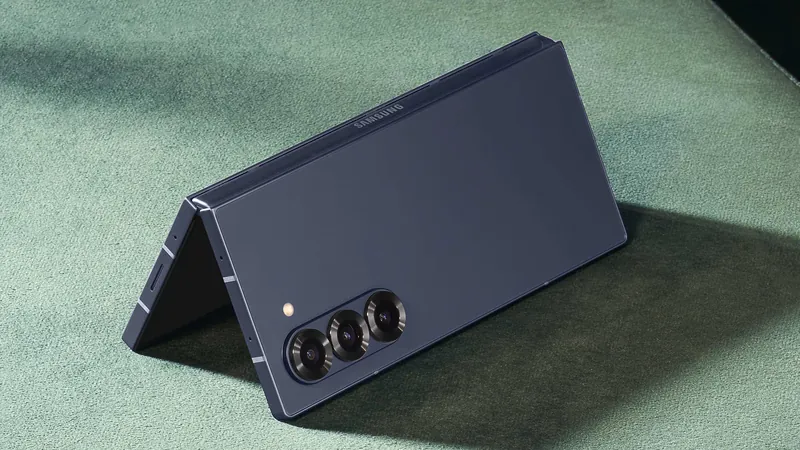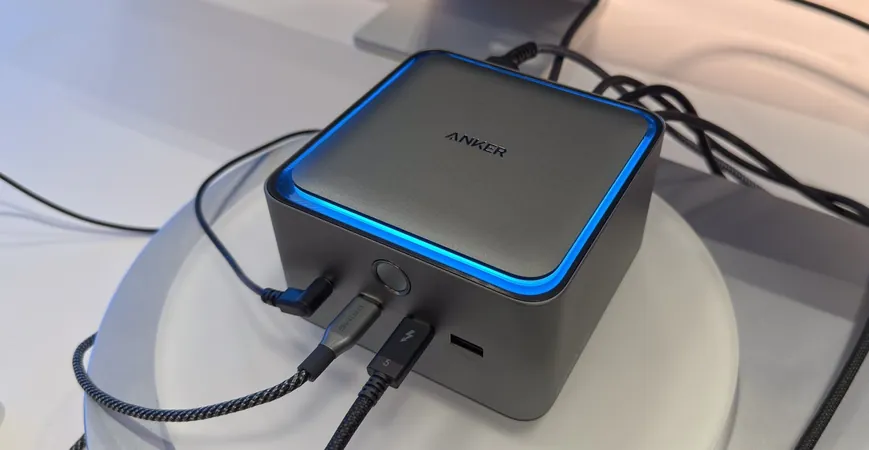
Breakthrough Study Reveals Superior Wound Closure Techniques for Hidradenitis Suppurativa After Surgery!
2024-11-22
Author: Siti
A groundbreaking new study has revealed that secondary closure techniques following wide excision surgery for hidradenitis suppurativa (HS) can significantly reduce the risk of disease recurrence compared to traditional primary closure methods. In fact, local/distant flap techniques resulted in a remarkable 55% reduction in recurrence risk, while split skin grafts showed a 45% reduction. This research may change the standard of care for patients affected by this challenging skin condition.
This comprehensive systematic review and meta-analysis was spearheaded by Corina Ioana Cucu from Carol Davila University of Medicine and Pharmacy in Romania, along with her dedicated research team. Their objective was to identify the most effective methods of wound closure post-surgery, focusing on recurrence rates, functionality, and the overall quality of life for patients.
Why the Study Matters
Recurrence of HS lesions is a significant concern for both patients and healthcare providers. The researchers noted that while recurrence is a key metric for evaluating treatment success, a standardized definition has been lacking in many studies, complicating the assessment of outcomes.
“In our systematic review and meta-analysis of existing literature, we evaluated various wound closure techniques used after wide excision for HS,” Cucu and her colleagues explained. “We specifically compared these methods concerning recurrence rates, overall outcomes, and improvements in patients' quality of life.”
Research Methodology Uncovered
To conduct their analysis, the team meticulously reviewed original research using the PubMed (MEDLINE) and Embase (Scopus) databases, covering studies from 1965 to 2024. They went above and beyond, collecting data from ClinicalTrials.gov, the Cochrane Register, and Google Scholar to ensure a thorough review of the methodologies employed.
Key data points included patient demographics, surgical methods utilized, recurrence rates, postoperative complications, and the subsequent impact on patients' quality of life—the Dermatology Life Quality Index (DLQI) being a primary measure.
By February 2024, the investigative team has sifted through an impressive 1,181 records, ultimately narrowing their focus to 121 critical analyses for the meta-analysis.
Remarkable Findings Revealed!
The findings were striking, revealing that HS recurrence rates varied significantly depending on the chosen surgical reconstruction method. For primary closure, the recurrence rate stood at 25%. When skin grafts were employed, this dropped to 18%, and using flaps led to an even lower recurrence rate of just 12%. Notably, patients receiving secondary intention healing experienced the highest recurrence rate of 28%.
Ultimately, among the various techniques assessed, flap closures emerged as the most effective for minimizing disease recurrence.
However, the researchers conveyed acknowledgments regarding potential limitations in their study. They pointed out that most included studies were retrospective, which could introduce bias. Furthermore, variations in study designs, patient populations, and follow-up durations might also have influenced their findings.
What Lies Ahead?
As this study illuminates the path toward more effective wound closure techniques following HS surgery, it raises the hopeful prospect of improved outcomes for patients struggling with this debilitating condition. As research in this field continues, it may pave the way for advanced clinical practices that enhance patient care and promote better quality of life.
Stay tuned as the healthcare community digests these findings, potentially reshaping treatment protocols and providing renewed hope for those affected by hidradenitis suppurativa!



 Brasil (PT)
Brasil (PT)
 Canada (EN)
Canada (EN)
 Chile (ES)
Chile (ES)
 Česko (CS)
Česko (CS)
 대한민국 (KO)
대한민국 (KO)
 España (ES)
España (ES)
 France (FR)
France (FR)
 Hong Kong (EN)
Hong Kong (EN)
 Italia (IT)
Italia (IT)
 日本 (JA)
日本 (JA)
 Magyarország (HU)
Magyarország (HU)
 Norge (NO)
Norge (NO)
 Polska (PL)
Polska (PL)
 Schweiz (DE)
Schweiz (DE)
 Singapore (EN)
Singapore (EN)
 Sverige (SV)
Sverige (SV)
 Suomi (FI)
Suomi (FI)
 Türkiye (TR)
Türkiye (TR)
 الإمارات العربية المتحدة (AR)
الإمارات العربية المتحدة (AR)